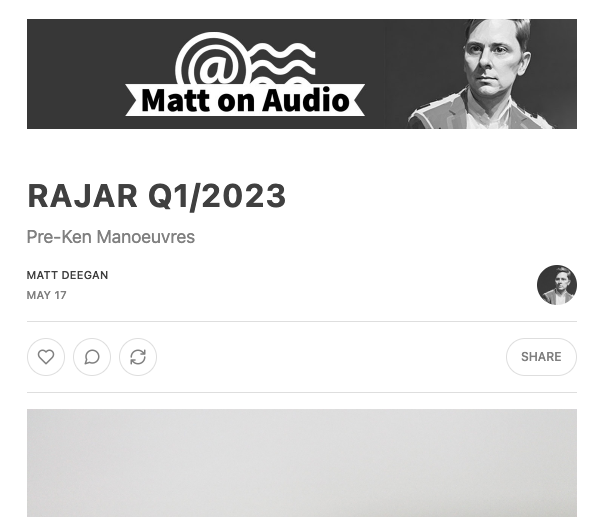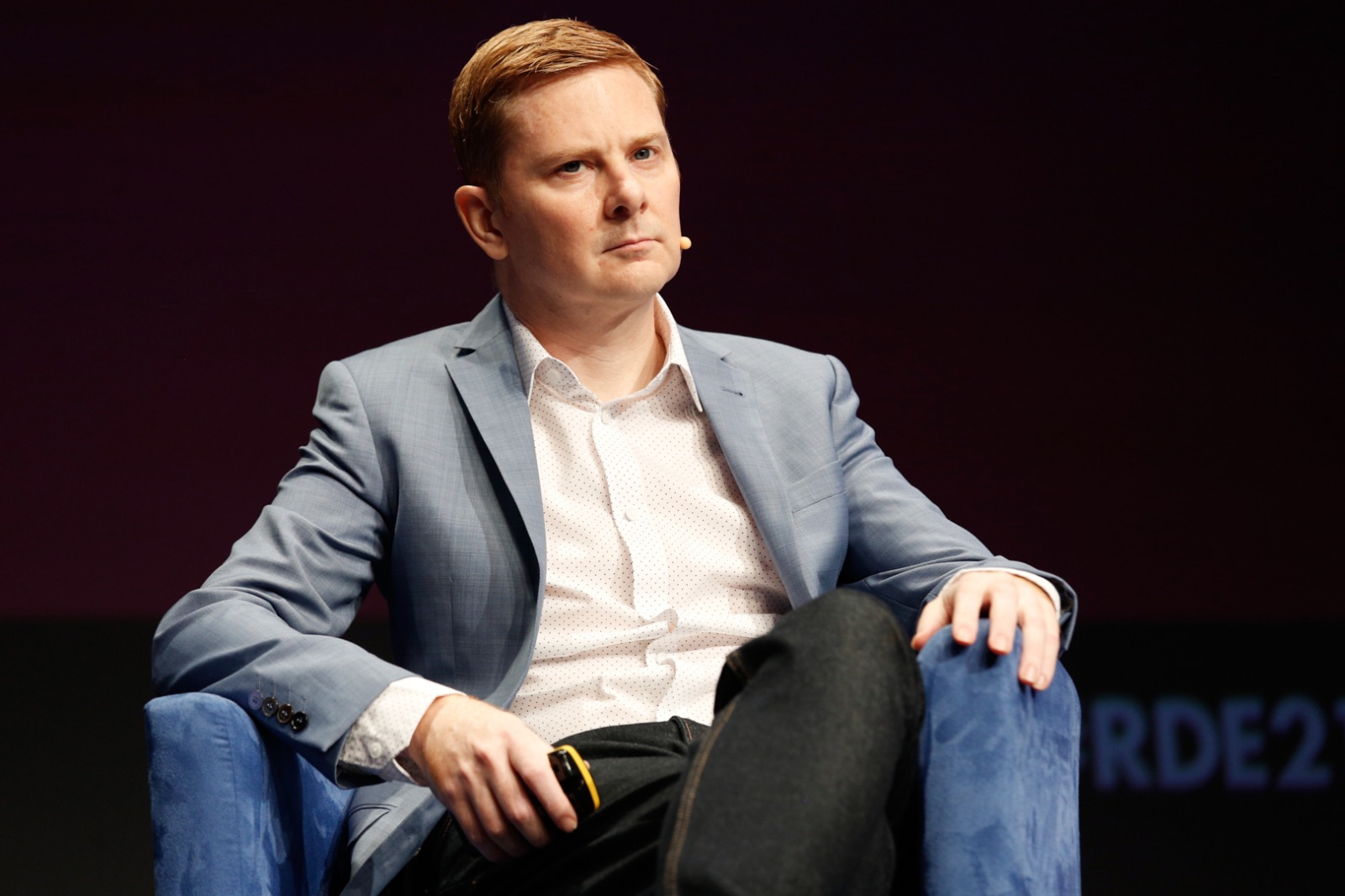This week on The Media Podcast I’m joined by Gold Wala’s Faraz Osman and Adam…
SUBSCRIBE TO MATT’S WEEKLY NEWSLETTER
Get the latest news and insight about radio, podcasts and streaming

Get the latest news and insight about radio, podcasts and streaming
This week on The Media Podcast I’m joined by Gold Wala’s Faraz Osman and Adam…
It’s RAJAR time again. Thanks to Hallett Arendt and their brilliant Octagon software I got to run…
There’s history repeating itself at The Telegraph as another government probe is launched, and the…
This week in the media world, we’ve seen a mix of resignations, drama hits, and…
In our EIGHTH annual predictions special, I welcome the UK’s finest media commentators to discuss…
What does All3Media have in common with The Daily Telegraph? Both may soon be in…
The BBC have a new chair – and a new licence fee settlement. Media news…
Matt Deegan’s been involved in exciting audio projects for over 20 years. He’s co-founded a whole host of audio businesses including the children’s radio station Fun Kids, the digital multiplex network MuxCo, the British Podcast Awards, Podfollow, Podcast Rex and Podcast Discovery. He’s also worked with and advised companies including the BBC, Bauer, Global, News UK, MTV, Crooked Media, Podimo and many more. Find out more about Matt.
